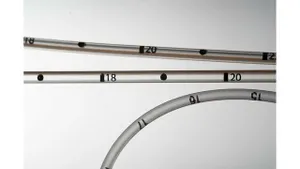It’s too late to put the genie of globalization back in the bottle
U.S. companies continue to off-shore to Asia, even as Asia off-shores to the United States. It's time to recognize that economic nationalism is not an effective business model for countries that want to succeed in the 21st century.
July 27, 2017

 Samsung is coming to South Carolina to make washing machines, and is even moving some of its work from Mexico to the new facility, an abandoned Caterpillar facility. That reminded me of the custom injection molding company—Mulay Plastics, was it?—that built a hole-in-the-wall molding facility to serve Maytag’s washing machine plant in Florence, SC. It wasn’t long afterward that Whirlpool purchased Maytag (on April 1, 2006); not long after that Whirlpool closed the Florence facility and moved the work to Mexico.
Samsung is coming to South Carolina to make washing machines, and is even moving some of its work from Mexico to the new facility, an abandoned Caterpillar facility. That reminded me of the custom injection molding company—Mulay Plastics, was it?—that built a hole-in-the-wall molding facility to serve Maytag’s washing machine plant in Florence, SC. It wasn’t long afterward that Whirlpool purchased Maytag (on April 1, 2006); not long after that Whirlpool closed the Florence facility and moved the work to Mexico.
Globalization has truly become the prevailing economic business model, and anyone who believes that nationalism can be effective in building a strong U.S. economy has bats in their belfry! The manufacturing world looks like a chessboard, with constant moves to find the cheapest labor market, the largest consumer markets to make and sell goods and the most profitable markets. Sometimes it works; sometimes it doesn’t.
Things in the United States are looking better, with workers’ wages relatively flat and the abundance of natural gas pushing down energy prices. Not only are foreign companies investing here, but some U.S.-based corporations that went global are now bringing some of that manufacturing back home.
General Motors, for example, has found that its biggest and best market is the U.S. consumer; North America is the centerpiece of GM’s business. GM is exiting from Europe and “certain emerging markets,” selling its “money-losing Opel unit and shuttering operations in India and South Africa,” noted a Wall Street Journal article (“GM’s European Exit Takes Toll on Profit,” published on July 26, 2017), authored by Mike Colias. GM will focus its resources and capital on “higher-return opportunities,” CEO Mary Barra told the WSJ. Translated, that means “a new line of pickup trucks due in 2018 and the revitalization of Cadillac’s premium product line.”
At about the same time, Ford Motor Co. announced that it will build the Focus in China and import this vehicle to the United States. And so the world turns.
The latest news is that Foxconn is coming to America! While several states competed for the opportunity to have this Taiwanese electronics company set up a liquid crystal display panel factory, it was announced yesterday that Wisconsin was the winner with $3 billion in incentives for Foxconn. The $10 billion facility could eventually employ up to 13,000 people.
Molders are also seeing the advantages of customers coming back to the USA, in spite of many years of attempting to meet customer demand for molds and parts at the “China price.” Jatco Inc., a Union City, CA, custom molder and moldmaker posted “Returning to the U.S.” on its website that speaks to its change in business models.
Jatco said that while the company has had “an incredible amount of success gaining customers whose manufacturing operations were based overseas . . . in the long run there were numerous issues that ended up costing and hurting these companies” that went in search of “very cheap” manufacturing opportunities.
“At first this new model seemed like the right path,” wrote Jatco. “Yet slowly companies started to come back, and Jatco was their key point of U.S.-based manufacturing re-entry.”
With increasing demand, production costs at the Chinese molding facilities went up and quality and manufacturing efficiency went down. “Costly mistakes started to occur throughout a product’s cycle. Manufacturing errors weren’t caught until large-volume shipments arrived in their designated market and flaws were noticed, often by the consumer,” noted Jatco’s blog post. “At other times products were damaged, went missing or simply were completely stolen. Problems arose with communication barriers, storage and safety, shipping on time and so forth. Ultimately, the money that was saved in overseas plastic-injection manufacturing ended up being put back into the operations necessary to correct critical issues. It stopped being worth it.”
At the end of the day, where companies choose to manufacture goods is not really as important as why. Cheap labor was never a long-term business reason to move manufacturing half-way around the world. Eventually the playing field of labor costs leveled out. But while there are valid reasons for bringing manufacturing (back) to the United States, and we are seeing much movement in that direction, valid business reasons remain to near-shore manufacturing to Mexico, Canada or Costa Rica, as well as to off-shore to Asia.
Nationalism doesn’t work anymore because, like it or not, globalization of manufacturing continues to happen. Perhaps companies are considering more carefully the reasons for locating their manufacturing, mapping long-range strategies instead of short-term benefits.
What do you think? Let us know by taking our poll in the right-hand column of the website or leave a comment.
About the Author(s)
You May Also Like




